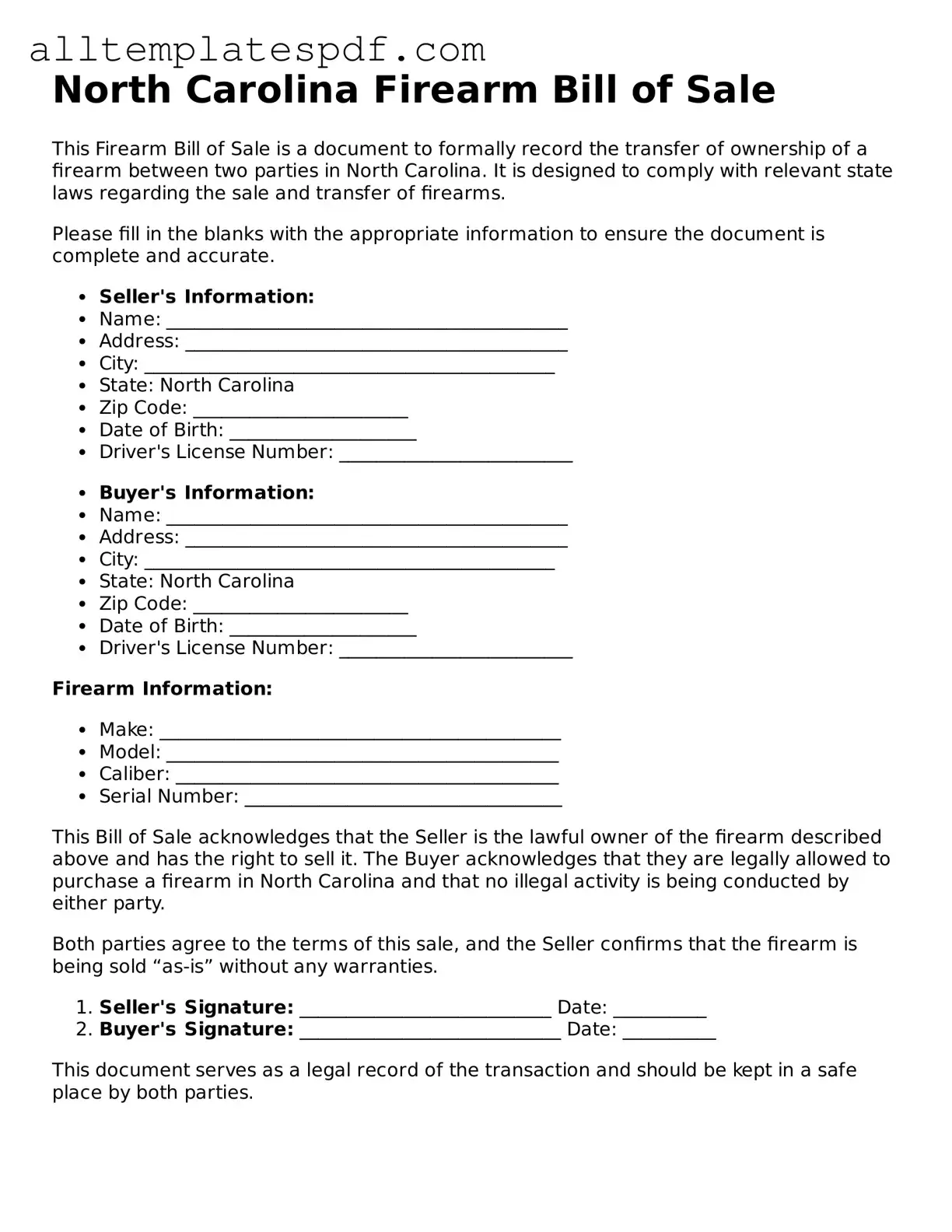When filling out the North Carolina Firearm Bill of Sale form, many people make common mistakes that can lead to complications later on. One frequent error is not providing complete information. It’s essential to include the full names, addresses, and contact details of both the buyer and the seller. Omitting any of this information can result in the form being deemed invalid.
Another mistake often seen is failing to accurately describe the firearm. The form should include details such as the make, model, caliber, and serial number. Inaccuracies in this information can create confusion and may lead to legal issues in the future.
Many individuals also overlook the importance of signatures. Both parties must sign the form to validate the transaction. If one party neglects to sign, the bill of sale may not hold up in court or during a background check.
Additionally, some people forget to date the form. A date is crucial as it indicates when the transaction took place. Without a date, there can be ambiguity regarding the timing of the sale.
Not understanding the local laws can also lead to mistakes. Each county in North Carolina may have specific regulations regarding firearm sales. It’s important to be aware of these to ensure compliance and avoid any legal repercussions.
Some individuals may also fail to keep a copy of the completed bill of sale. It’s advisable for both the buyer and seller to retain a copy for their records. This documentation can be vital if any disputes arise in the future.
Another common error is neglecting to verify the buyer’s eligibility. Sellers should always ensure that the buyer is legally allowed to purchase a firearm. This helps prevent potential legal issues down the line.
People sometimes rush through the process, leading to mistakes in the information provided. Taking the time to carefully review the form before submitting it can help avoid errors that could complicate the transaction.
Lastly, not seeking assistance when needed can be a mistake. If there’s uncertainty about how to fill out the form correctly, it’s wise to consult with someone knowledgeable. This can save time and prevent issues that may arise from a poorly completed bill of sale.
